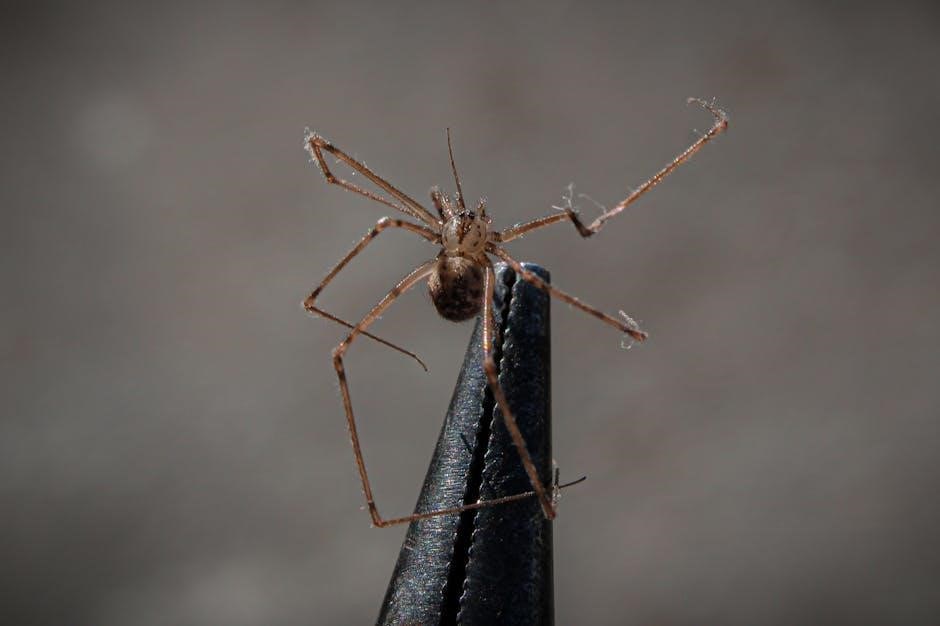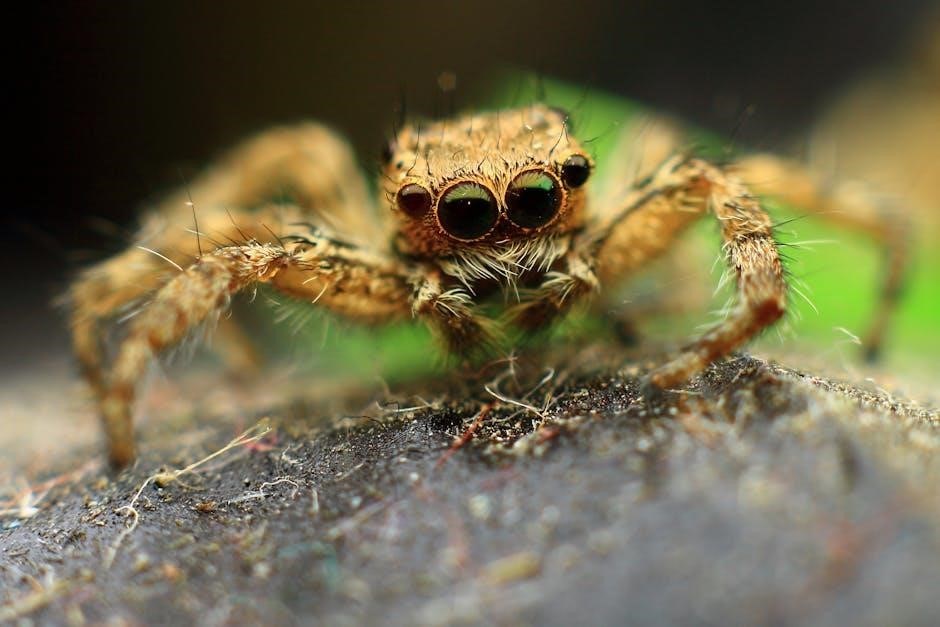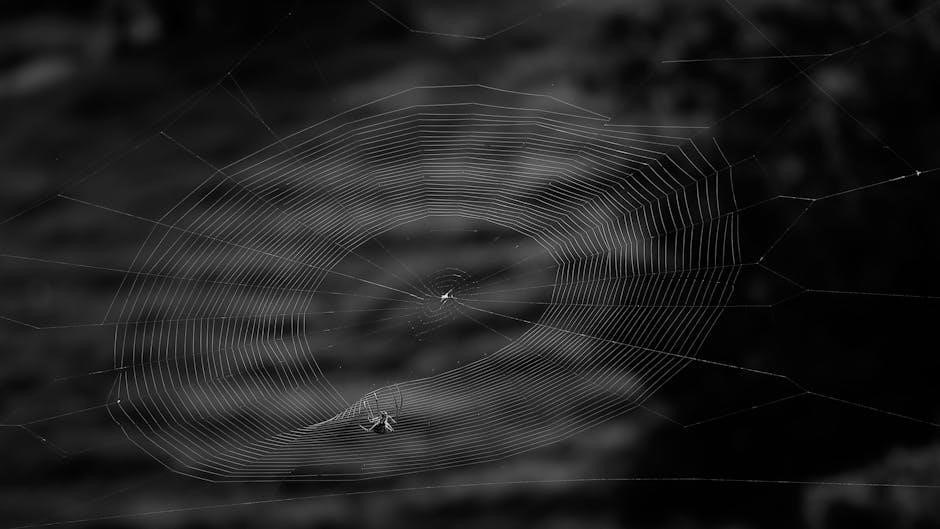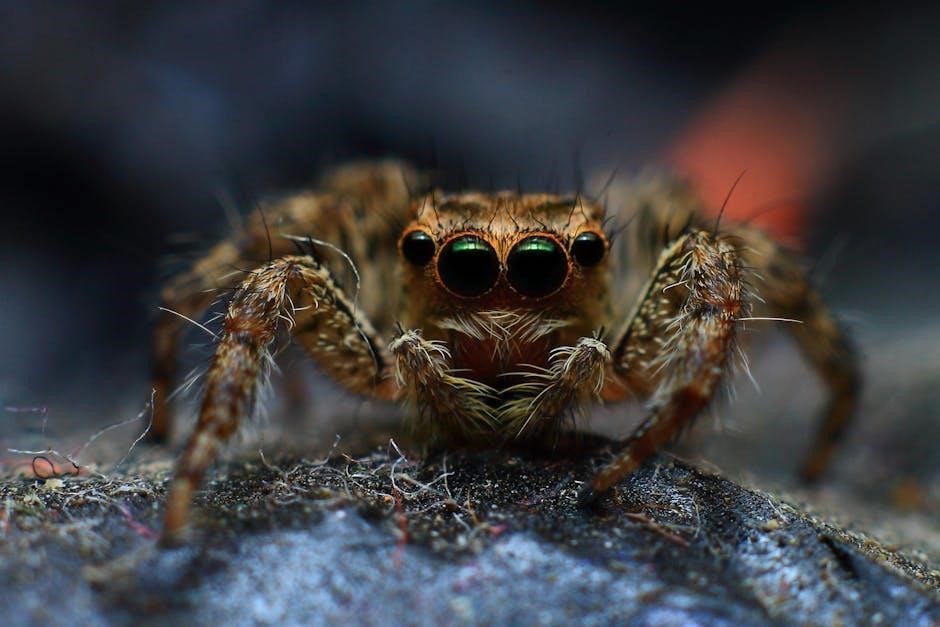
house insect eggs identification guide
Identifying insect eggs in your home is crucial for early detection and prevention of pest infestations. This guide provides essential insights into recognizing and understanding insect eggs, helping you take proactive steps to protect your space from unwanted critters.
1.1 Importance of Identifying Insect Eggs
Identifying insect eggs is vital for early detection and prevention of pest infestations. Recognizing eggs allows homeowners to address potential issues before they escalate, reducing the risk of property damage and health hazards. Certain insects, like cockroaches and bed bugs, can trigger allergies or spread diseases, making timely identification critical. Additionally, understanding insect eggs aids in targeted pest control, minimizing the use of broad-spectrum insecticides. Early detection also helps prevent economic losses from structural damage caused by termites or carpet beetles. By identifying eggs, you can take proactive steps to protect your home and family from unwanted pests.
1.2 Common Household Insects and Their Eggs
Several common household insects lay eggs that can be found in homes. Cockroaches produce egg cases called oothecae, which contain multiple eggs. Bed bugs lay tiny, white, oval-shaped eggs in hidden areas. Flies often deposit their eggs in organic matter, resembling small grains of rice. Spiders create egg sacs, which are protective bundles containing their eggs. Termites and carpet beetles also lay eggs that can go unnoticed until they hatch. Recognizing these eggs is essential for identifying potential infestations early, allowing for timely pest control measures to prevent further damage or health risks.

Common Characteristics for Identifying Insect Eggs
Insect eggs vary in color, shape, size, and texture. Using a magnifying glass helps examine these features for accurate identification. Key characteristics include color variations, shapes like oval or cylindrical, and distinct textures.
2.1 Color of Insect Eggs
Insect eggs display a wide range of colors, aiding in identification. Common colors include white, yellow, green, brown, and spotted patterns. Cockroach eggs are often brown, while bed bug eggs are typically white. Fly eggs appear yellowish or translucent. These color variations help distinguish species and understand their life cycles. Observing egg color is a critical step in accurate identification, as it can indicate the insect’s type and potential threat level. Using a magnifying glass enhances color visibility, ensuring precise detection and classification of the eggs found in your home or garden.
2.2 Shape and Size of Insect Eggs
Insect eggs vary significantly in shape and size, which are key factors for identification. Bed bug eggs are tiny, oval, and about a pinhead’s size. Cockroach eggs are larger, cylindrical, and often enclosed in a protective casing called an ootheca. Fly eggs resemble small grains of rice and are usually laid in clusters. Spider eggs are spherical and bundled in silk sacs. The shape and size of eggs provide vital clues about the insect species, helping homeowners and pest control professionals determine the appropriate management strategies. Accurate measurement and observation are essential for correct identification.
2.3 Texture and Pattern of Insect Eggs
Insect eggs exhibit a wide range of textures and patterns, aiding identification. Cockroach eggs are smooth and leathery, enclosed in a protective ootheca. Bed bug eggs are white, sticky, and often found in clusters. Fly eggs are smooth and typically laid in moist environments. Spider eggs are wrapped in silk sacs with distinct patterns. Some eggs feature ridges, spots, or other markings for camouflage. These textures and patterns not only help eggs blend into their surroundings but also provide critical clues for accurate identification. Observing these details under magnification is essential for determining the insect species and addressing potential infestations effectively.

Practical Tips for Identifying Insect Eggs
Use a magnifying glass to examine size, shape, and texture. Check hidden areas like cracks, baseboards, and furniture seams for clusters or sacs. Compare findings with guides for accurate identification and effective pest control.
3.1 Using a Magnifying Glass
A magnifying glass is an essential tool for identifying insect eggs. It allows you to examine the eggs’ size, shape, and texture in detail. Start by placing the egg under the lens and adjust the focus for clarity. Look for patterns, colors, and any distinctive features. This close-up inspection helps differentiate between various species, such as the oval shape of bed bug eggs or the cylindrical structure of cockroach oothecae. Regular use of a magnifying glass enhances your ability to recognize specific traits and makes the identification process more accurate and efficient.
3.2 Examining Size, Shape, and Texture

Examining the size, shape, and texture of insect eggs is critical for accurate identification. Insect eggs vary in size, from microscopic to easily visible, and their shapes can be round, oval, cylindrical, or irregular. Texture ranges from smooth to ridged or patterned. For example, bed bug eggs are tiny, white, and oval, while cockroach oothecae are larger, brown, and leathery. By carefully noting these details, you can distinguish between species and narrow down the identification. This step, combined with a magnifying glass, helps ensure a precise and informed analysis of the eggs you encounter in your home.
3.4 Checking Hidden Areas in the Home
Inspecting hidden areas is vital for detecting insect eggs, as many pests lay their eggs in secluded spots. Check cracks, crevices, mattress seams, and behind furniture. Use a flashlight to illuminate dark corners. Pay attention to areas near food sources, such as pantry shelves or pet food storage. Regularly inspect carpets, baseboards, and window frames. Eggs are often laid in clusters, making them easier to spot when you know where to look. Thoroughly examining these areas helps in early detection and prevention of infestations, ensuring effective pest control measures can be implemented promptly.

Identification of Specific House Insect Eggs
This section focuses on identifying eggs of common household pests, such as cockroaches, bed bugs, flies, spiders, termites, and carpet beetles. Key characteristics like color, shape, and location are highlighted to aid in accurate identification and effective pest control measures.
4.1 Cockroach Eggs (Ootheca)
Cockroach eggs, known as ootheca, are protective casings containing multiple eggs. They are typically brown or reddish-brown, rectangular, and measure about 8-10mm in length. Female cockroaches carry the ootheca until the eggs hatch. These egg sacs are often found in dark, undisturbed areas like baseboards, cabinets, or behind appliances. Identifying ootheca is crucial for early pest control, as they can hatch into dozens of nymphs; Using a magnifying glass can help spot these egg cases, which are usually smooth and have a leathery texture. Regularly inspecting hidden spaces can prevent cockroach infestations from escalating.
4.2 Bed Bug Eggs
Bed bug eggs are tiny, white, and oval-shaped, about the size of a pinhead. They are often found in clusters within cracks and crevices, such as mattress seams, bed frames, and behind headboards. Female bed bugs lay their eggs in hidden spots, where they adhere due to a sticky substance. Eggs hatch within 6-10 days, producing nymphs that resemble small, pale adult bed bugs. Identifying these eggs early is critical for controlling infestations. Use a magnifying glass to spot them, and inspect thoroughly, as they are easily overlooked in dark, secluded areas.
4.3 Fly Eggs
Fly eggs are tiny, white, and resemble grains of rice. They are typically laid in large batches on surfaces like rotting vegetation, manure, or exposed food. These eggs hatch within 24 hours into larvae, known as maggots, which are creamy white, up to half an inch long, and pointed at one end. Fly eggs are often found in moist, organic environments, such as garbage or decaying matter. Identifying them early helps prevent infestations, as they can quickly develop into adult flies. Inspect areas near food waste or damp spaces to spot these eggs before they hatch.
4.4 Spider Egg Sacs
Spider egg sacs are often mistaken for small balls of fluff or debris. They are typically white or off-white, round or oval, and protected by a silk covering. Female spiders create these sacs to house their eggs, which can number from a few to hundreds. Egg sacs are usually found in dark, undisturbed areas like corners, basements, or behind furniture. They can vary in texture, from smooth to fuzzy, depending on the species. Identifying them requires careful observation, as they may resemble other household items. Regularly inspecting hidden spaces can help spot these sacs before they hatch.
4.5 Termite Eggs
Termite eggs are small, white, and often found in clusters near soil or wood. They are typically laid by the queen in protected areas, such as underground nests or within wooden structures. These eggs hatch into larvae, which can cause significant damage to homes and buildings. Identifying termite eggs early is crucial for preventing infestations. They can be mistaken for other small white objects, so careful examination is necessary. Regular inspections of potential nesting sites can help detect termite eggs before they develop into destructive colonies. Prompt action is essential to avoid costly repairs.
4.6 Carpet Beetle Eggs
Carpet beetle eggs are tiny, white, and typically oval-shaped, often found in carpets, upholstery, or near fabrics. Females lay these eggs in hidden areas, such as under furniture or in carpet fibers. The eggs hatch into larvae that feed on organic materials, causing damage. They are challenging to spot due to their small size but are usually clustered together. Identifying carpet beetle eggs early can prevent infestations and protect valuable belongings from damage. Regular cleaning and inspections are key to detecting these eggs before they develop into destructive larvae. Prompt treatment is essential to avoid further harm.

Insect Egg Identification Chart
This chart provides a visual guide to insect eggs, highlighting key features like color, shape, and size. It helps users quickly identify common household pests and their eggs, enabling early detection and effective pest control measures. The chart includes detailed images and descriptions, making it an essential tool for homeowners and professionals alike. By referencing this chart, individuals can accurately determine the type of insect eggs they encounter, ensuring proper eradication methods are applied. Regular use of the chart fosters a proactive approach to pest management, safeguarding homes from potential infestations and damage. Its user-friendly design makes it accessible to everyone, regardless of prior knowledge or experience in pest control. Utilizing the chart consistently can lead to a significant reduction in pest-related issues, creating a safer and cleaner living environment. Additionally, the chart serves as a valuable educational resource, teaching users about the life cycles and habits of various insects, thereby enhancing their ability to prevent future infestations. By combining visual and descriptive elements, the chart becomes an indispensable asset in the fight against unwanted pests, empowering individuals to take charge of their home’s pest control needs effectively. The chart’s comprehensive nature ensures that no common household pest eggs are overlooked, providing a thorough and reliable reference for all users. Ultimately, the insect egg identification chart is a practical and efficient solution for anyone seeking to protect their home from pests, offering clear and actionable insights with minimal effort required. Its widespread adoption can lead to a noticeable improvement in home maintenance and pest prevention strategies across communities. As a result, the chart stands as a testament to the power of knowledge in combating pests, ensuring that users are always well-informed and prepared to address any insect-related challenges they may face. With its robust features and ease of use, the chart remains an essential component of any effective pest control plan, delivering lasting benefits to those who utilize it. Furthermore, the chart’s emphasis on early detection underscores the importance of vigilance in maintaining a pest-free home, encouraging users to adopt a proactive stance against potential threats. By leveraging the chart’s expertise, individuals can confidently identify and address pest issues, fostering a sense of security and well-being within their living spaces. In conclusion, the insect egg identification chart is a vital resource that bridges the gap between awareness and action, enabling users to take control of their home’s pest situation with precision and confidence. Its enduring value lies in its ability to empower individuals with the knowledge needed to safeguard their homes, ensuring a pest-free environment for years to come.
5.1 Egg Size Chart
Insect eggs vary significantly in size, ranging from microscopic to a few millimeters. This chart categorizes egg sizes, helping users identify pests. For example, cockroach eggs are about 1mm, while bed bug eggs are slightly smaller. Fly eggs are tiny, resembling grains of rice, and spider egg sacs can be larger, containing multiple eggs. By comparing the size of found eggs to this chart, homeowners can narrow down the pest species. This tool is especially useful when combined with observations of color, shape, and location, ensuring accurate identification and targeted control measures. It aids in early detection, preventing infestations from growing uncontrollable.

5.2 Egg Color Chart

The color of insect eggs is a key identifier, varying widely across species. Cockroach eggs are often reddish-brown, while bed bug eggs are white. Fly eggs appear yellowish or translucent, and spider egg sacs can range from white to tan. Carpet beetle eggs are typically white or off-white, and termite eggs are pale yellow. Understanding these color variations helps in distinguishing between pest species. This chart provides a visual guide to egg colors, aiding homeowners in identifying potential infestations. By matching the color of found eggs to this chart, users can narrow down the pest type and take appropriate action. Color is a crucial factor in accurate identification.
5.3 Egg Shape Chart
Insect eggs vary significantly in shape, aiding identification. Cockroach eggs are typically oval or cylindrical, while bed bug eggs are small and oval. Fly eggs are elongated, resembling tiny grains of rice. Spider egg sacs can be spherical or irregularly shaped. Carpet beetle eggs are usually oval and white, whereas termite eggs are spherical and pale. This chart highlights common shapes, helping users identify eggs found in homes. Shape, combined with color and size, provides critical clues for accurate pest identification. Understanding these variations enables effective control measures, ensuring early detection of potential infestations. Shape is a vital characteristic in egg identification processes.
Steps for Effective Insect Egg Identification
Identify insect eggs systematically by examining size, shape, and texture, checking hidden areas, and using charts or expert advice for accurate identification and pest control.
6.1 Observing Egg Clusters

Examining egg clusters is vital for effective insect egg identification. Many insects, such as bed bugs and cockroaches, lay their eggs in groups, often in hidden areas like cracks, crevices, or beneath surfaces. These clusters can vary in size and arrangement, providing key clues about the species; For instance, bed bug eggs are typically found in sticky, white clusters near mattress seams, while cockroach oothecae are leathery and contain multiple eggs. Observing these patterns helps in determining the type of pest and the severity of the infestation, enabling targeted control measures to be implemented promptly.
6.2 Comparing with Identification Guides
Comparing suspected insect eggs with reliable identification guides is essential for accurate determination. These guides provide detailed descriptions of egg characteristics, such as color, shape, size, and texture, specific to various pest species. By matching the observed features of the eggs to those in the guide, you can narrow down the possibilities and identify the insect. High-quality images and diagrams in these guides further aid in distinguishing between similar-looking eggs. Regular updates in identification resources ensure relevance, helping you stay informed about common household pests and their egg forms for effective management and control strategies.
6.3 Consulting Pest Control Professionals
When dealing with persistent or unidentified insect eggs, consulting pest control professionals is highly recommended. Experts possess extensive knowledge and experience in identifying species accurately, ensuring effective treatment plans. They can provide insights into the life cycle and behavior of pests, aiding in targeted solutions. Additionally, professionals are equipped with specialized tools and techniques to locate hidden eggs and address infestations comprehensively. Their involvement is crucial for severe cases or when DIY methods fail, offering peace of mind and long-term prevention strategies to safeguard your home from pest-related damages and health risks.

Prevention and Control Measures
Preventing insect infestations involves regular cleaning, sealing entry points, and using insecticides. Monitoring for early signs of eggs ensures timely action, protecting your home from pest damage.
7.1 Cleaning and Sanitizing
Regular cleaning and sanitizing are vital for preventing insect infestations. Dust and vacuum thoroughly, paying attention to cracks and crevices where eggs may hide. Use mild detergents to wipe countertops and floors, and ensure trash is emptied daily. Sanitize areas around food sources and dispose of decaying matter promptly. For carpets and upholstery, vacuum with a hose attachment to remove hidden eggs. Mop surfaces with a disinfectant solution to eliminate larvae and eggs. Avoid using harsh chemicals near food or pets; opt for eco-friendly cleaners when possible. Consistent cleaning disrupts pest life cycles, reducing the risk of infestation.
7.2 Sealing Entry Points
Sealing entry points is essential to prevent insects from entering your home and laying eggs. Inspect your house thoroughly, focusing on cracks, crevices, and gaps around windows, doors, and pipes. Use caulk, weatherstripping, or steel wool to seal these openings. Pay attention to vents, chimneys, and attics, as these are common entry points for pests. Regularly check for worn-out seals and repair them promptly. By creating a physical barrier, you can effectively reduce the likelihood of insects gaining access to your home and minimize the risk of egg deposition in hidden areas.
7.3 Using Insecticides
Using insecticides is a critical step in controlling insect infestations and preventing egg-laying. Choose products specifically designed for the target pest, and apply them to areas where eggs or insects are commonly found, such as cracks, crevices, and baseboards. Always follow the product instructions for proper application and safety. Insecticides can effectively eliminate adult insects and disrupt their life cycle, reducing the likelihood of future egg deposition; Combine this method with other prevention strategies, such as sealing entry points, to create a comprehensive pest control plan for your home.
Identifying insect eggs is vital for effective pest control. By understanding their characteristics and implementing preventive measures, you can safeguard your home from potential infestations early on.
8.1 Summary of Key Points
Identifying insect eggs requires observing color, shape, size, and texture. Common household pests like cockroaches, bed bugs, and flies lay eggs in hidden areas. Using magnifying tools and guides helps in accurate identification. Early detection through regular inspections of cracks, crevices, and dark spaces is crucial. Preventive measures such as cleaning, sealing entry points, and using insecticides can control infestations. Consulting professionals ensures effective pest management. Understanding these key points aids in protecting homes from potential damage and health risks associated with pests.
8.2 Final Tips for Effective Pest Control
Regularly inspect hidden areas like baseboards and furniture seams for insect eggs. Use magnifying tools to examine size and texture; Maintain cleanliness and sanitize surfaces to deter pests. Seal entry points to prevent infestations. Consider professional help for severe cases. Educate yourself on local pests and their egg characteristics. Stay vigilant and act promptly to avoid widespread issues. Combining these strategies ensures a proactive approach to pest control, safeguarding your home and health.


Leave a Reply
You must be logged in to post a comment.